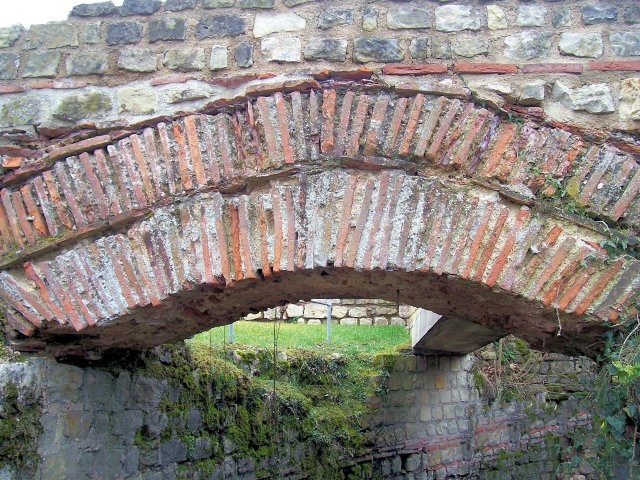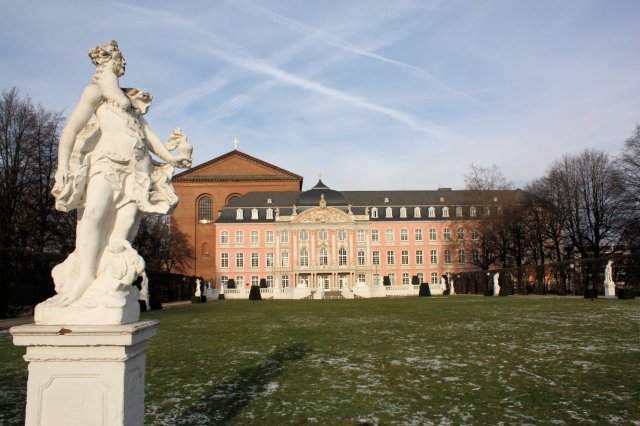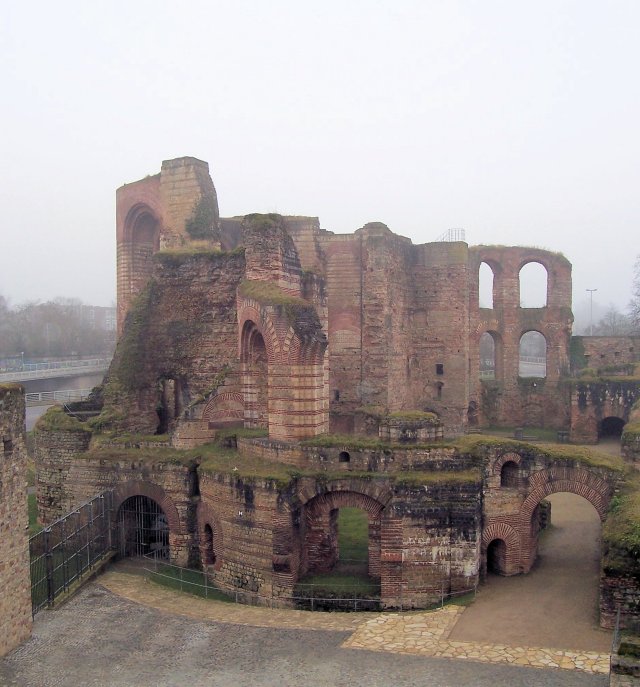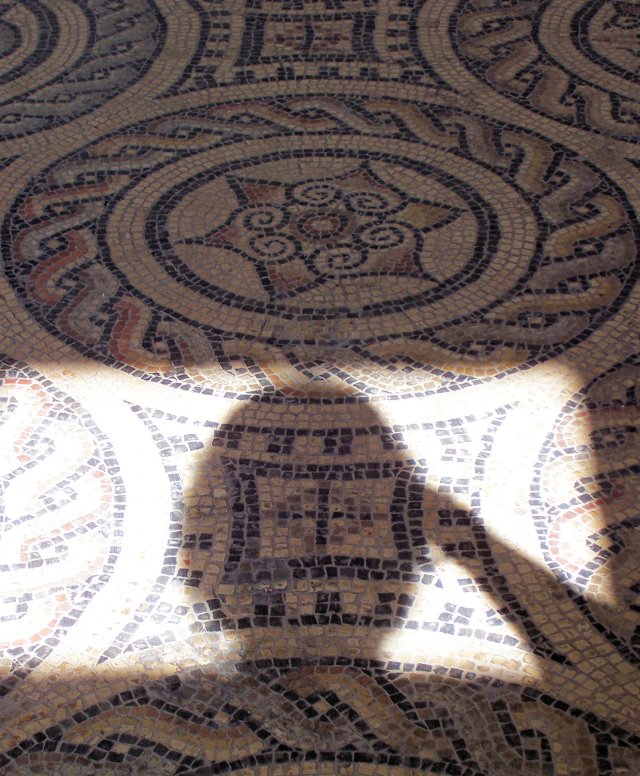After so many years of travel, it is difficult to choose one single place as a favorite, but there is one place stands out in my mind more than the others. Trier, Germany’s oldest city, and nicknamed, “the Rome of the North,” calls me back again and again. Every visit to Trier is like the first visit. If you wander around long enough you’ll find something new every time. Trier is situated along the Moselle Valley in Germany, near Luxembourg. Trier boasts not one or two, but eight UNESCO World Heritage sites. If you’re looking to check a few UNSECO sites off your travel bucket list, Trier is an excellent place to begin.
Although the history of Trier spans more than two millennia, it’s the Roman history that keeps bringing me back. I’ve been to Rome once, Trier at least five times, and there is no question that Trier wins out for me. Rome has more, and the ruins are bigger, but in Trier you get a sense of being back in time that you can’t get anywhere else. It’s not crowded so you can wander this beautiful city as slowly or as quickly as you like. Everything is within walking distance so there is no metro, and there is no need to jostle and bustle for a spot in line to see the ruins.There are no crowds, no matter the time of year, and there is a sense of relaxation and history everywhere. Coffee shops are everywhere and many offer a spectacular view of Trier’s famous monuments. Everything in Trier, with the exception the badly deteriorated ruins of the Barbara Baths are within walking distance of the central square.
The history of Trier dates all the way back to pre-historic times, and the famous medieval manuscript the Gesta Treverorum (Deeds of the Treveri) claim that Trier was founded by an Assyrian prince centuries before the founding of Rome. However, since Trier is full of Roman ruins, and Roman history is my special passion, we’ll stick to the Roman history of Trier. Trier was established between 16 B.C. and 30 B.C. and was called the Augusta Treverorum. Trier was also the residence of several usurpers as well as legitimate Roman emperors including Maximian, Constantius Chlorus, and finally Constantine the Great. Constantine the Great called Trier home until he left in 316 AD for somewhere better, Byzantium (Constantinople).
One of the most notable monuments in Trier is the structure called the Aula Palatina (Constantine’s Basilica). Constantine’s Basilica was built in 310 AD, and used until Constantine left the city for good. Although three of the exterior walls were destroyed by air raids during WWII,the site is an impressive monument to Constantine, the Tetrarchy, and the Roman Empire. Today the structure is used as an Evangelical Church, but it is open to the public, and there is an impressive history of the basilica along the walls, as well as original brick still visible in the one surviving wall.
Constantine’s Basilica may be the most historically significant monument in Trier, but the most architecturally intact Roman monument in all of Trier is the Porta Nigra (Black Gate). Today the Black Gate is situated right at the end of the town square. You can have lunch or kaffee und kuchen (coffee and cake) and gaze at the Black Gate for as long as you like. The Black Gate was originally pale grey, almost white, and built sometime around 186-200 A.D. The Black Gate was one of four city gates that once existed in Trier.
The other three did not survive time, progress, and re-use for other building materials, but not only did the Black Gate survive, but it has nearly the same appearance today as it did 1,800 years ago, only the color has changed.The Black Gate is architecturally significant because it is held together only by a type of iron and lead “staple” and sheer weight. No mortar or concrete was used. Unfortunately, the Black Gate was a frequent target of medieval scrap metal thieves, and the holes they left after scavenging the metal rods out of the stones are still visible today. No one knows what the Black Gate was originally called, but it may have been called “The Gate to Mainz,” since Mainz was the next most important city in Germany north of the gate. During the eleventh and twelfth centuries, the gate was converted into the Church of Saint Simeon and used as such for nearly eight hundred years. The conversion of the gate to a church is probably what saved it from being picked apart for building material.
In 1804 Napoleon decided that he wanted the gate to revert back to its natural appearance and he ordered all buildings that had been attached to the gate to be torn down. This is my third or fourth post where Napoleon had a hand in the alteration of a historical monument. Napoleon stole Horses of St. Mark from Venice as well as a beautiful Byzantine mosaic from Ravenna now housed in Berlin. For better or worse, Napoleon had a hand in the preservation of many historic monuments. Thanks to those early preservation efforts, the gate looks today as it did in antiquity, and is open to the public. You can climb all the way to the top to take in the spectacular city views as the ancient Romans once did. If you look closely on your the way up the dimly lit staircase, you may see the mark of a Roman stonemason who had a hand in building the Black Gate, “M.C.”
It’s easy to spend a half a day exploring the Black Gate, but there are many more Roman ruins to explore. While some of the crowds were over at the Black Gate, the Imperial Baths were virtually deserted. It’s quite a different experience to walk those damp, moldy, dark tunnels alone, wondering who walked there before me. The Imperial Baths in Trier are exceptionally well-preserved. The name may not be what you think though. Imperial refers to Kaiser Wilhelm II, and the baths were named for him when he visited the city. Because Constantine left the city before the baths were completed, they sat half-finished, until Valentinian II came and quartered his imperial guard there. Judging from the ruin that is left, the baths would have been a monument to the grandness of the Roman Empire if they had been completed.
The Imperial Baths, Black Gate, and Constantine’s Basilica are all well-known monuments in Trier, However there are several more areas full of Roman history left to explore. Not far from the city center is Trier’s Roman amphitheater. Built at the end of the second century, it is estimated that it once held 18,000 spectators. A second set of baths, named the Barbara Baths are just outside the city center. These baths were heavily damaged during the seventeenth century when they were used for artillery practice, and nothing at all was visible of them until excavations revealed their foundations a few years ago. Also worth mentioning is the Trier Cathedral. Although it is not Roman, just to the left of the entrance is a curious black column, worn smooth by time. This stone, actually called the Domstein, is all that remains from Valentinian and Gratian’s massive church complex from the fourth century. What happened to the other three “Domsteins” has been lost to history.
Trier’s proximity to Luxembourg during the Roman period was strategically as well as commercially important. On the road to Luxembourg is a monument to the success of one particular cloth merchant. Called the Igel Column, it was built in the third century and stands 23 meters high! Obviously this family, named Secundiner, was quite important to erect such an impressive monument. This column looks so out of place along the highway in a tiny German village, but it is so rare and so important that it has become a UNESCO World Heritage site.
Finally, as you continue the drive toward Luxembourg, the Otrang Roman Villa is not to be missed. Otrang Villa was a wealthy estate that was at its peak in the second century. Excavations began there in 1836 and revealed a manor house with at least 68 rooms, several outbuildings, baths, and even a temple. Today a reconstruction sits on top of the ruins, but many of the original mosaics and foundations are still visible. I also had the entire villa to myself one late spring afternoon.
Somehow time allowed the Romans to leave an imprint on Trier that will not be lost to history. Even after so many visits, I look forward to the next time I can explore Trier. There is hidden history around every corner. Trier has truly earned its nickname, “The Rome of the North.”
References:
- Trier UNESCO World Heritage Sites
- Gestae Treverorum
- Official Website of the City of Trier
- Cuppers, Heinz. Otrang Roman Villa. Landesamt fur Denkmalpflege Rheinland-Pfalz Verwaltung der staatlichen Schlosser. Mainz: 1990.
- Schoning’s Travel Guide: Trier, Germany’s Oldest City.
Originally published on Jaunting Jen, republished with permission.








